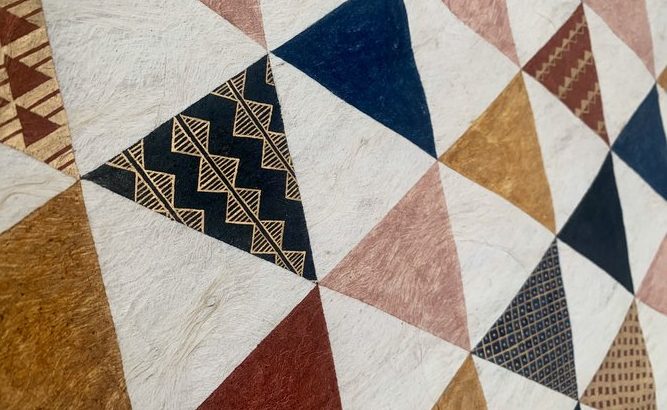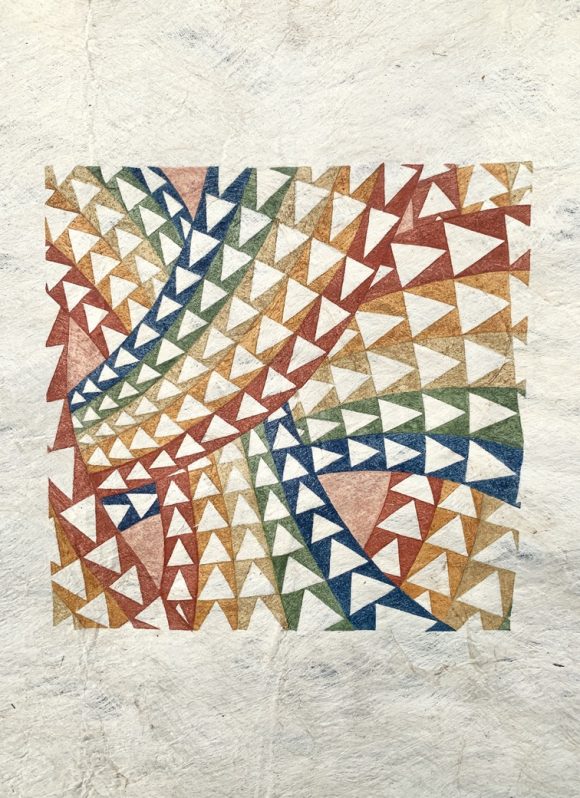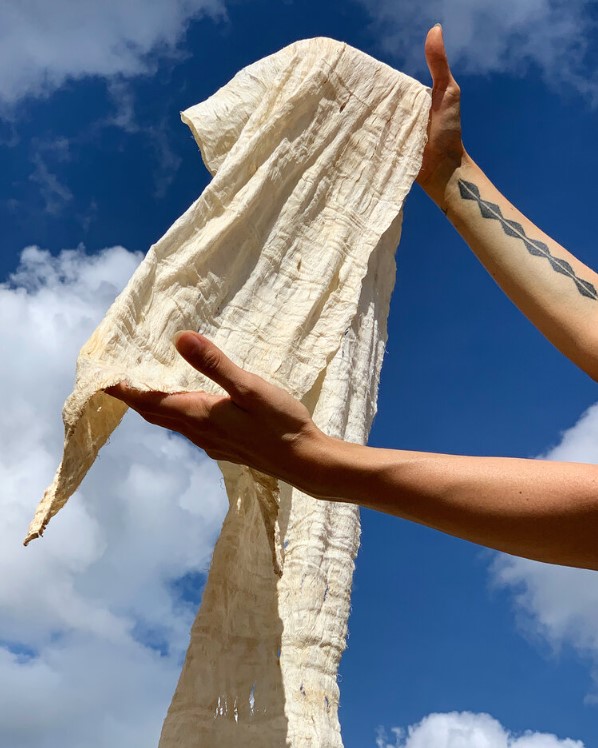
“No Mākou Ke Ānuenue”: Decolonizing Conversations on Queer Identities
June 29, 2023
In the piece “No Mākou Ke Ānuenue,” which translates to “A Rainbow for All,” undulating rainbows wrap around each other, flowing like a series of interlocking waves. Through these rainbows, Native Hawaiian artist Lehuauakea aims to acknowledge that the Pacific Islander community is a composition of diverse yet interwoven experiences, including those of traditional queer identities that colonial powers failed to erase.

Lehuauakea, No Mākou Ke Ānuenue, earth pigments on kapa, 2022. Purchased with funds from the Ellingson Family.
Hailing from Pāpaʻikou on Moku O Keawe, the Big Island of Hawaiʻi, Lehuauakea states that their work is dedicated to addressing “complex subjects of mixed identity and cultural erasure, Indigenous resilience, and ecological relationships through a contemporary Hawaiian lens.” Committed to using traditional artistic avenues to depict each spoke of their personal identity, Lehuauakea primarily works with Kapa, the fibrous insides of the paper mulberry tree. Kapa, a strong, paper-like cloth, is made through a lengthy process of repeated soakings and beatings that takes several weeks to complete.
Despite Kapa being intrinsically woven throughout the lives of Native Hawaiians, the practice was almost lost due to assimilation policies pushed by American colonial powers. Painted on Kapa itself, “No Mākou Ke Ānuenue” is a double act of indigenous resistance—Lehuauakea’s queer, Māhū existence takes center stage, displayed on material imperialism failed to destroy.
- Artist Lehuauakea
- Example of kapa cloth
Māhū is the Hawaiian term that describes someone who contains both kāne (male) and wahine (female) spirit, representing a third gender among the indigenous Hawaiian population. Historically, beating Kapa was a task typically completed by females in the community. In turn, painting on Kapa as well as the tool-making was done by the men. Māhū individuals, such as Lehuauakea, occupy a unique space, possessing the ability to undergo all parts of the Kapa-making process.
Pre-colonial contact, Māhū were respected caretakers, elders, and spiritual practitioners. Lehuauakea believes their community needs to prioritize escaping the dark shadow of colonialism and continue to uplift Māhū individuals to their once revered status.
“As a whole, not only am I working to revive kapa-making, a practice that was nearly lost to colonization; but I also aim to reclaim our traditional queer identities that were highly stigmatized after religious missionary contact in the early 1800s.” – Lehuauakea
While there have been considerable strides forward in recent years, Lehua states that both the queer community and Native Hawaiian population need to put in substantial work to become truly inclusive spaces. As depicted through the interwoven waves in “No Mākou Ke Ānuenue,” Lehua promotes increased respect for queer individuals within the Pasifika community as well as greater acknowledgment of Pasifika individuals within the queer community.
“I hope that one day we are able to break from the colonial stigmas that were placed on us and honor the multitude of roles that our ancestors once held.”
Following Lehuauakea’s guidance, the Escalette Collection encourages its readers to look beyond the Western ideas of gender in their interpretation of the Queer Community and Pride Month and highlight indigenous voices within the community. To read more about indigenous artists within the Escalette Collection, click here.
Sources:
We invite you to explore all the works in the Escalette Collection by visiting our eMuseum.
Wilkinson College of Arts, Humanities, and Social Sciences is the proud home of the Phyllis and Ross Escalette Permanent Collection of Art. The Escalette Collection exists to inspire critical thinking, foster interdisciplinary discovery, and strengthen bonds with the community. Beyond its role in curating art in public spaces, the Escalette is a learning laboratory that offers diverse opportunities for student and engagement and research, and involvement with the wider community. The collection is free and open to the public to view.



